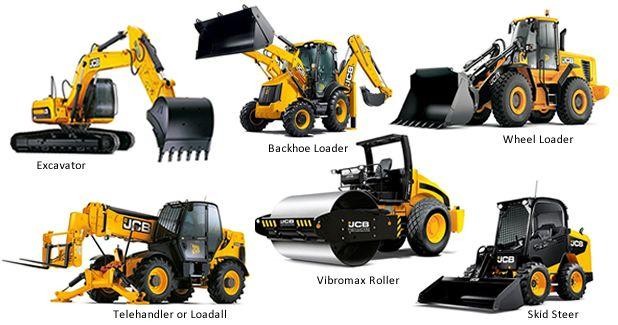Aerial Lift Rental: Versatile Lifting Solutions for High-Access Jobs
Wiki Article
Optimize Your Budget Plan by Understanding the Prices Related To Building And Construction Tools Leasings
Recognizing the complete extent of costs associated with building and construction equipment services is critical for maximizing your budget. What strategies can be used to properly take care of these costs and guarantee a much more effective rental experience?Summary of Rental Expenses
When considering construction tools services, understanding the linked expenses is extremely important for reliable budgeting and job preparation. Rental prices can vary significantly based on a number of aspects, including tools kind, period of service, and area. The initial rental fee typically reflects the devices's market demand and its associated operational abilities, affecting the overall cost.In addition to the base rental rate, secondary expenses might arise, such as transportation costs, gas surcharges, and upkeep charges. It is necessary to make up these additional expenditures to properly assess the overall expense of renting devices. The rental duration can impact rates; longer leasings might certify for reduced rates, while short-term leasings might sustain greater daily fees.

Break Down of Rental Rates
An extensive understanding of rental prices is necessary for service providers and task managers aiming to maximize their budget plans. Rental rates for building and construction tools generally include several parts, consisting of base prices, time-based fees, and use fees.Base prices are the core costs associated with the leasing of the equipment, commonly figured out by the type and size of the machinery. These prices can vary substantially, influenced by variables such as devices demand, availability, and regional market patterns. Time-based fees, which may be daily, weekly, or monthly, offer to accommodate different job timelines and rental durations.
In addition, rental prices may consist of use charges, which apply when tools is utilized past a specified limit, guaranteeing that the rental business can represent deterioration. Seasonal demand changes can additionally influence rental rates, with peak building periods normally commanding greater prices.
In addition, comprehending the rental business's plans relating to maintenance and insurance coverage can offer additional insight into the overall expense structure. By examining these parts, contractors can make educated choices, ensuring the choice of rental devices aligns with both task needs and budget plan restrictions.
Added Fees to Think About
Understanding the ins and outs of additional costs is vital for specialists to handle their general service expenses properly. Past the conventional rental rates, various extra costs can substantially impact the total price of tools leasing. These costs my review here usually include shipment and pickup costs, which can vary based upon range and logistics associated with moving the tools to and from the job site.Furthermore, some rental business may impose gas additional charges if the equipment is returned with much less fuel than when rented. It is also important to know prospective cleaning charges, particularly for customized tools that calls for thorough maintenance after use.

Extensively evaluating the rental contract and clarifying these additional costs in advance can assist professionals avoid unexpected prices and make sure that budgets continue to be intact throughout the project lifecycle.
Repair And Maintenance Expenditures
Routine maintenance and repair service expenses are frequently overlooked aspects that can considerably affect the general cost of building and construction devices services. When leasing equipment, it is vital to think about not just the rental fees yet likewise the possible expenses related to keeping the equipment in optimal operating problem.Numerous rental business consist of fundamental maintenance as component of the rental agreement; however, much more extensive repairs or unexpected failures can bring about additional expenditures. It's vital to examine the rental agreement carefully to comprehend what upkeep solutions are covered and what responsibilities fall on the renter.
Moreover, tools that is not well-maintained can result in ineffectiveness at work site, potentially increasing and causing delays job prices. To minimize these risks, it is advisable to carry out routine examinations and maintain open communication with the rental supplier pertaining to page any issues that occur during usage.
Insurance Policy and Responsibility Costs
Insurance coverage and obligation expenses are important parts that can substantially influence the total expense of building tools rentals (construction equipment rentals). These expenses make certain that both the rental company and the client are shielded from possible financial losses occurring from accidents, damage, or burglary during the rental period
In addition, clients should know any deductibles or exclusions in the insurance plan, as these can influence potential out-of-pocket expenditures. Comprehending the terms and conditions of any type of insurance policy coverage is essential to prevent unanticipated expenses. Inevitably, budgeting for insurance coverage and liability costs can aid guarantee a smoother rental experience and shield against economic risks linked with building projects.
Final Thought
In his response conclusion, an extensive understanding of the expenses associated with building equipment rentals is vital for efficient budget plan administration. Eventually, notified decision-making relating to devices leasings contributes to the overall success of construction endeavors.Rental costs can vary considerably based on numerous variables, including equipment kind, period of leasing, and location (scissor lift rental). The rental period can impact rates; longer leasings may qualify for affordable prices, while short-term services may incur greater everyday charges
By performing detailed research study and engaging with trusted rental companies, specialists can efficiently navigate the intricacies of rental pricing, inevitably maximizing their economic resources.
Past the conventional rental prices, different additional costs can considerably influence the overall price of devices service. Rental companies usually offer liability insurance coverage that covers injuries to third celebrations or damages to residential property, while equipment damages insurance can cover the expense of repairs or substitute if the rented tools is damaged.
Report this wiki page